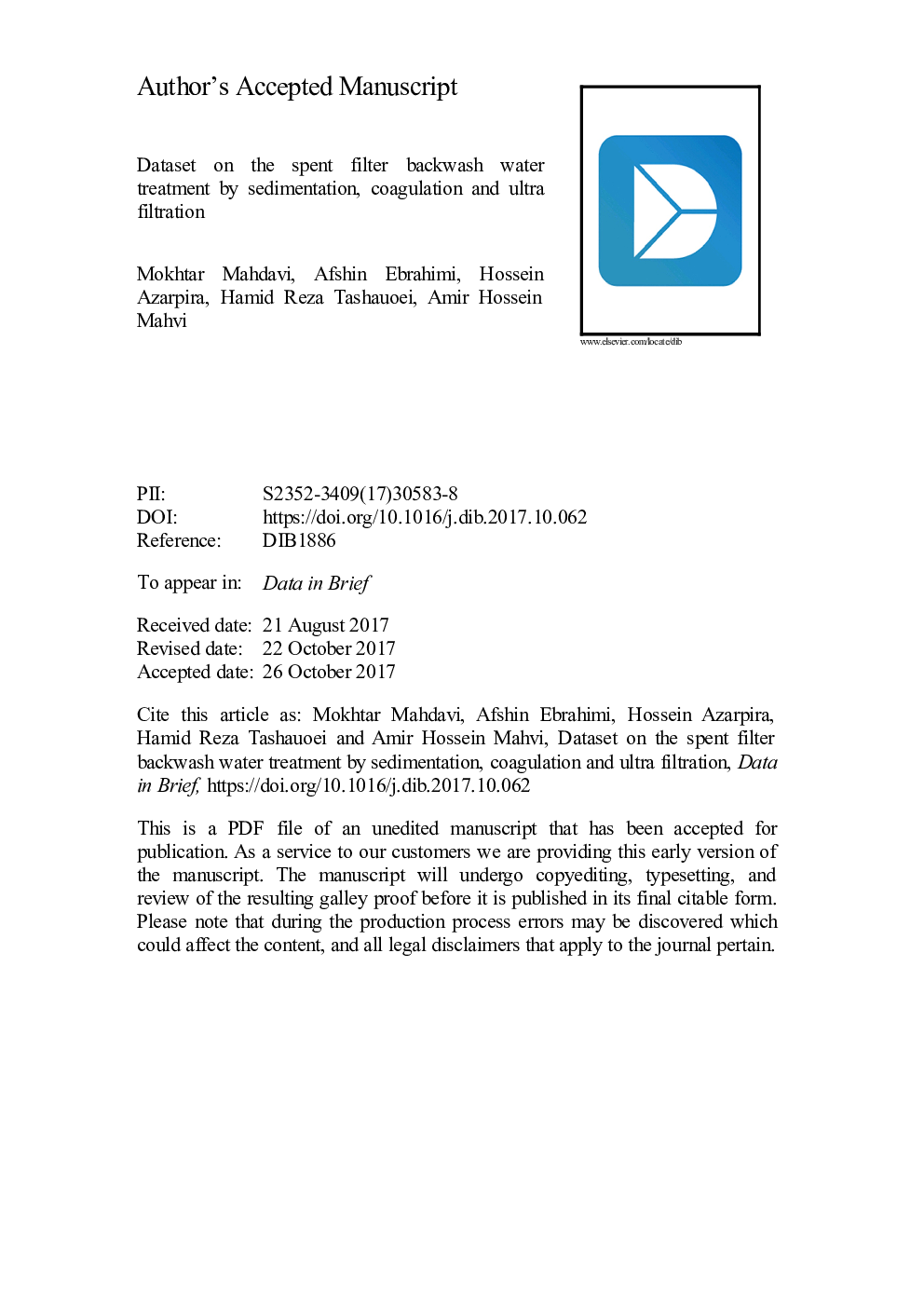| Article ID | Journal | Published Year | Pages | File Type |
|---|---|---|---|---|
| 6597415 | Data in Brief | 2017 | 11 Pages |
Abstract
During operation of most water treatment plants, spent filter backwash water (SFBW) is generated, which accounts about 2-10% of the total plant production. By increasing world population and water shortage in many countries, SFBW can be used as a permanent water source until the water treatment plant is working. This data article reports the practical method being used for water reuse from SFBW through different method including pre-sedimentation, coagulation and flocculation, second clarification, ultra filtration (UF) and returned settled SFBW to the beginning of water treatment plant (WTP). Also, two coagulants of polyaluminum ferric chloride (PAFCl) and ferric chloride (FeCl3) were investigated with respect to their performance on treated SFBW quality. Samples were collected from Isfahan's WTP in Iran during spring and summer season. The acquired data indicated that drinkable water can be produced form SFBW by applying hybrid coagulation-UF process (especially when PAFCl used as coagulant).
Related Topics
Physical Sciences and Engineering
Chemical Engineering
Chemical Engineering (General)
Authors
Mokhtar Mahdavi, Afshin Ebrahimi, Hossein Azarpira, Hamid Reza Tashauoei, Amir Hossein Mahvi,
